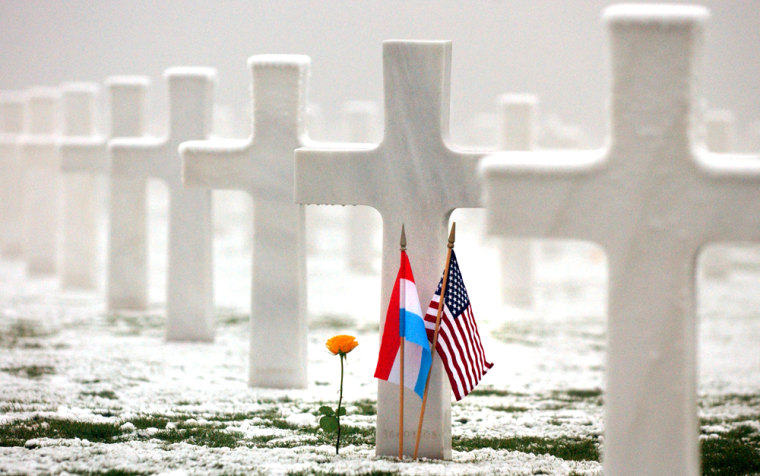U.S. veterans laid wreaths at ceremonies Thursday across southern Belgium and Luxembourg, marking the 60th anniversary of the start of the Battle of the Bulge, in which U.S. forces defeated Nazi Germany’s last bid to reverse the rapid advance of allied forces toward Berlin.
The commemorations marking World War II’s largest land battle in which U.S. troops participated were held at memorials and cemeteries across a wide swath of the hilly and wooded Ardennes region, which formed the battlefield that bitterly cold winter of 1944.
In the battle, more than a million troops — 600,000 Germans, 500,000 Americans and 55,000 Britons — fought in the snow from Dec. 16, 1944, to Jan. 25, 1945.
Night vigils were held at several places along the serpentine front, and there was also a brief memorial service at the Mardasson Memorial near Bastogne, the town that was surrounded by Germans whose offensive created a “bulge” around the town and threatened to cut it off.
Hastert representing U.S.
The memorial, which was erected in 1950, is a vast star-shaped monument that stands 40 feet tall and honors the memory of the killed and wounded U.S. soldiers or those who disappeared during the Ardennes offensive.
Saturday, it will be the site of the main commemoration ceremony, which will be attended by King Albert II of Belgium and U.S. House Speaker Dennis Hastert, R-Ill.
Ahead of the event, U.S. Ambassador Tom Korologos said the Battle of the Ardennes represented a “living message.”
“It is as relevant for our youth as for the veterans who fought. That message is that freedom must be continually defended against forces that seek to subvert it,” he added,
“whether against a totalitarian state in 1944 that sought to destroy democracy in the name of a repugnant philosophy or against global terrorism today that seeks to destroy Western ideas.”
The Mardasson memorial bears the names of U.S. Army units that participated in the action, as well as the names of the 48 U.S. states at the time in bronze letters.
Bastogne is central to the events in the days ahead. Several roads converged at the town in 1944, making it critical to blocking the German advance.
Friday, a parade of 300 World War II-era military vehicles will trek through the town’s narrow streets, passing by the town square, which is named for Anthony MacAuliffe, the acting commander of the 101st Airborne, whose paratroopers repulsed repeated attacks.
On Dec. 22, 1944, MacAuliffe was given two hours to surrender by the Germans or face “total annihilation.” His famous reply — which stumped the Germans — was “Nuts!”
